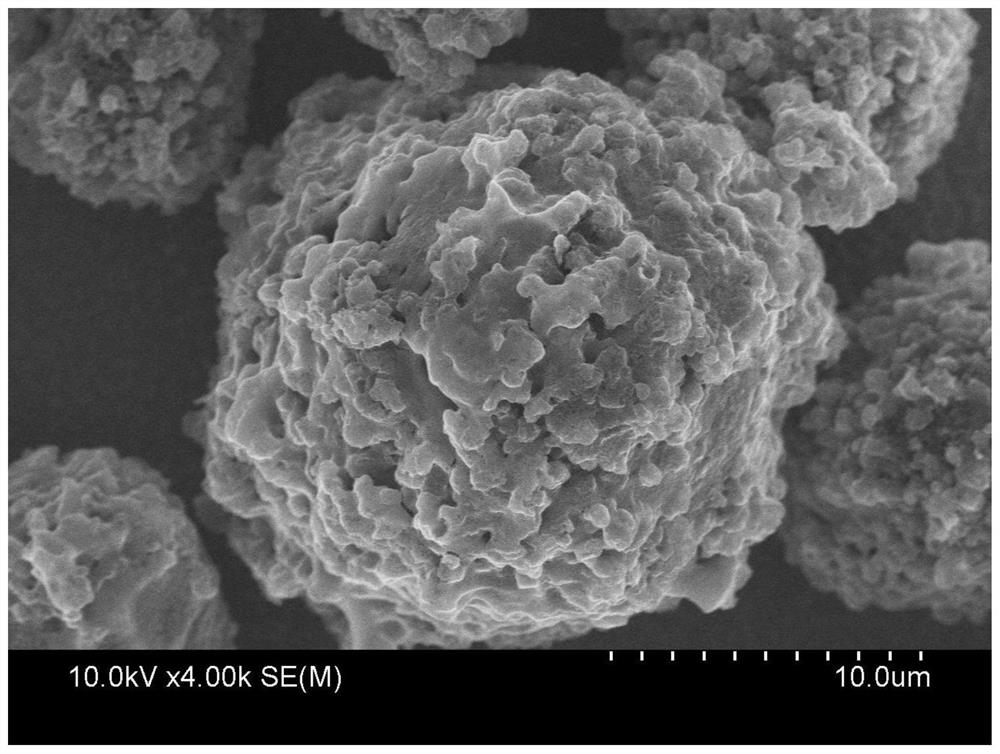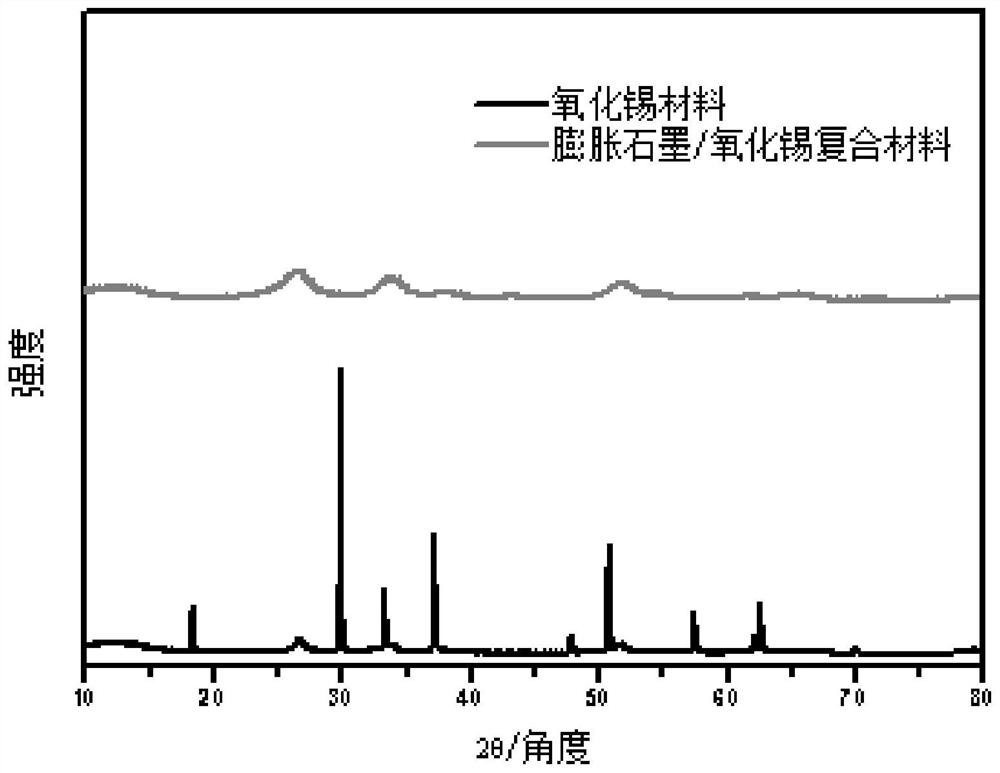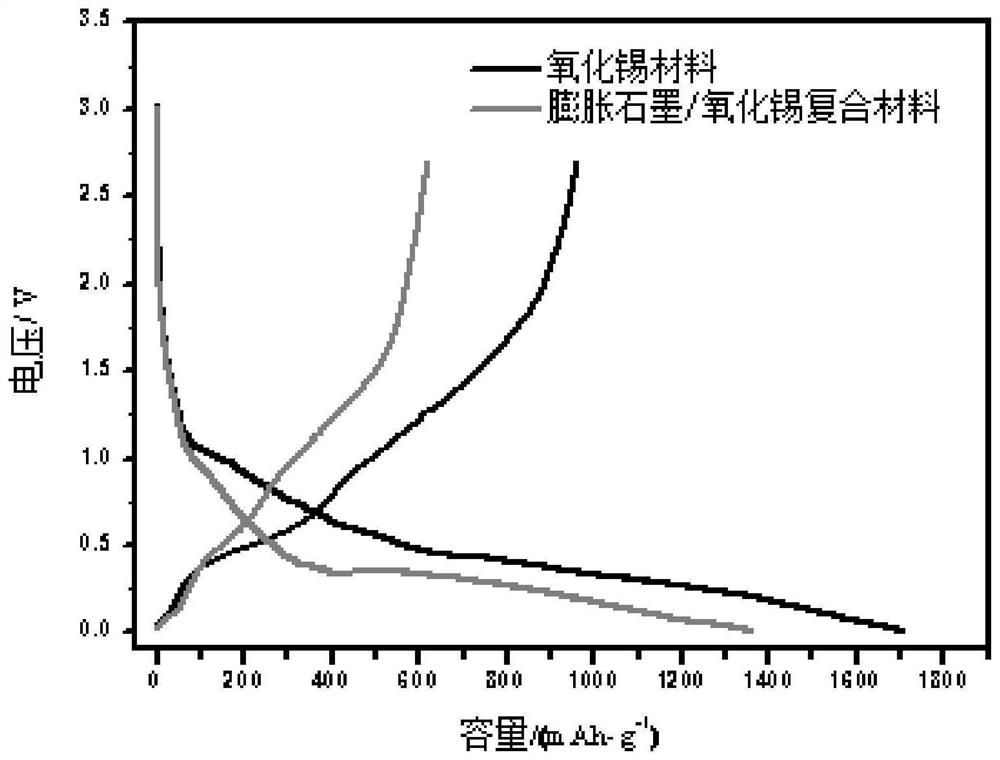Synthesis of an expanded graphite-tin oxide composite material and its application in lithium-ion batteries
A technology of lithium-ion batteries and expanded graphite, applied in graphene, battery electrodes, secondary batteries, etc., can solve the problems of electrode deactivation, poor cycle performance, electrode material and current collector falling off, etc., to increase specific capacity and increase The effect of cycle performance
- Summary
- Abstract
- Description
- Claims
- Application Information
AI Technical Summary
Problems solved by technology
Method used
Image
Examples
Embodiment 1
[0029] (1) Low temperature oxidation of graphite
[0030] Add 60ml of sulfuric acid with a concentration of 95% and 20ml of nitric acid with a concentration of 60% into the three-necked flask, add 5g of graphite under stirring, keep stirring at 0°C for 30min, then slowly add 10g of potassium permanganate and keep it at 0°C Stir for a week in an ice-water bath. Then take it out, add distilled water, wash several times until the pH value of the filtrate reaches 6.0, and finally place the sample in a vacuum drying oven at 60°C to fully dry to obtain graphite oxide.
[0031] (2) Preparation of expanded graphite / tin oxide composites
[0032] The graphite oxide prepared in step (1) is mixed with SnCl4 5H2O in a mass ratio of 1:1, after adding 50mL of distilled water, then add ammonia (20%) to adjust the pH-10, then put the mixed solution into 100g of potassium permanganate and add Among them, the hydrothermal temperature is controlled at 180°C, taken out after the reaction is comp...
PUM
 Login to View More
Login to View More Abstract
Description
Claims
Application Information
 Login to View More
Login to View More - R&D
- Intellectual Property
- Life Sciences
- Materials
- Tech Scout
- Unparalleled Data Quality
- Higher Quality Content
- 60% Fewer Hallucinations
Browse by: Latest US Patents, China's latest patents, Technical Efficacy Thesaurus, Application Domain, Technology Topic, Popular Technical Reports.
© 2025 PatSnap. All rights reserved.Legal|Privacy policy|Modern Slavery Act Transparency Statement|Sitemap|About US| Contact US: help@patsnap.com



